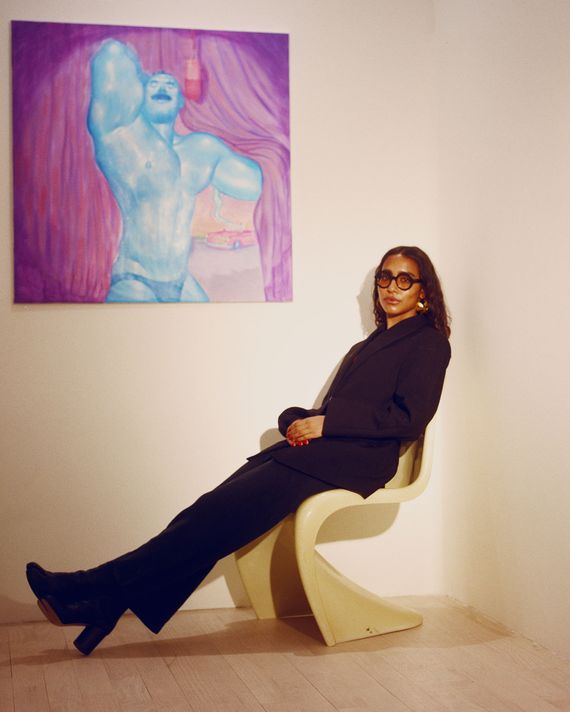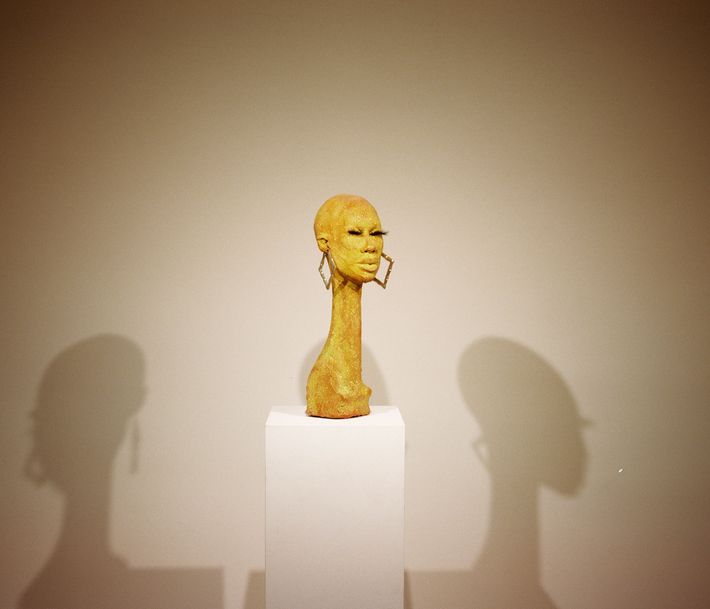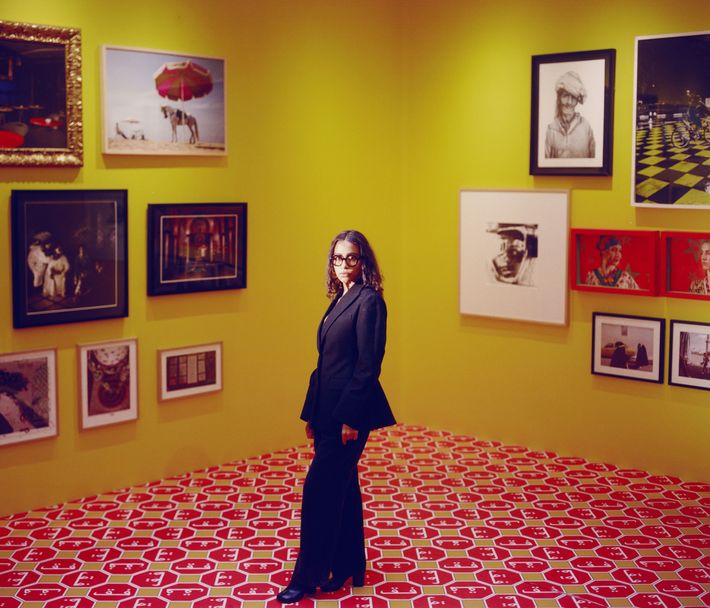This 27-Year-Old Started Her Own Gallery
Hannah Traore is fighting against elitism in the art world.

Hannah Traore is the name on the door of Hannah Traore Gallery on the Lower East Side, a space devoted to “celebrating artists who have been historically marginalized.”
Traore, who grew up in Toronto to a Jewish mother and a Malian father, has worked as a curatorial intern at MoMA and Fotografiska. She is influenced by other Black women gallerists in the industry, like pioneering dealer Linda Good Bryant and Ebony Haynes, a director at mega-gallery David Zwirner who is soon to open a Zwirner off-shoot with an all-Black curatorial staff.
What about your early life put you on the path to this moment?
My mom put all of us into the arts in every way she could, when we were super young. I was in the dark room doing film photography in grade four in addition to throwing pottery. We all went to art camp, but we also constantly went to museums wherever we were in the world and in Toronto. On the weekends we would do arts and crafts like making paper and tie-dye shirts. In the same way that my mom infused art into our lives, my dad subconsciously influenced his culture into our lives. I’m extremely proud to be the daughter of a Malian immigrant, and I do feel like it informed my childhood really deeply.
What thrills you the most about being a gallerist?
Being able to give artists the platform that they deserve. That includes their autonomy, their creativity, and absolute genuine support. It’s also nice to be able to say when I believe in something and not have to ask someone for permission. For me, selling art is exciting for what it can do for my artists, as well as placing their work in collections or homes that will love living with the work.

Biggest barrier of entry in the art world?
Elitism for sure, which is something I’m really striving to work against in the gallery. When I worked at MoMa they always talked about how they wanted to diversify their team and it’s like you gotta pay people more. You gotta do the work or else that’s not gonna happen.
Then there’s the fact that people don’t feel comfortable in those spaces, so why are they gonna try to work there? There are no corners in my gallery space. Part of the reason I wanted to incorporate soft curves was because I wanted it to feel warm. Subtle things to make people feel welcome to make people come in.
Tell me about your path to becoming a gallerist.
It became my dream after curating an exhibition in college for my senior thesis and realizing how much I loved working as a curator, but realizing that I couldn’t work as curator exactly as I wanted to in someone else’s space. I started off going back home to Toronto and being hired by one of my mentors, Kenneth Montague. He hired me to curate an exhibition at the Gladstone Galleries and that was my first job out of college. I jumped into a painting and sculpture curatorial internship at MoMa, which was wonderful. After that I moved on to Fotografiska in 2019 as their installation coordinator, which only lasted about three months because the pandemic hit. They asked me back once things settled a little bit, but at the same time my other mentor, Isolde Brielmaier, asked me to be her project manager. It was actually while I was working with her part-time that I was starting to work on my gallery.
Any failures you’ve experienced?
A really good example of a little failure would be making a list of your ideal artists for a show. And then half of those artists won’t even answer. And then a quarter of them will say no for whatever reason — they don’t know who I am yet, or they don’t have any work available, or whatever it is. At first when I’d reach out to someone and they would say no, I’d be devastated. What I learned from all of it is that everything will be fine.

Let’s talk about the finances. How are you making it work?
I’m very intentional with every dollar. I didn’t have a business partner, but I definitely had business consultants helping me with the business plan. It was important to me to be extremely involved in every single process as I have never taken a business class in my entire life, so it felt like a crash course. My business consultants gave me incredible guidelines that I never would have thought of: How many works I need to sell at a show; how much each piece has to be, etc. It was really important to me to stick to a budget, but I gave myself a little bit more room for my first two exhibitions just because it was important to me to do them really, really right and make a splash. But moving forward, I think we’ll be a little tighter.
What is a routine or practice that makes you feel taken care of?
I love bookmaking, or book-binding, so if I’m feeling really stressed, I’ll bind a book.
Do you see art as investment or pleasure?
I think it’s both. In terms of my own collecting, I see it as pleasure, but I think it is one of the best investments you can make.
What advice would you give to someone starting to invest their money in art?
I do think that you should go with your gut. If you’re thinking about it as an investment — definitely do your research, but I would also say to choose something you love. If worse comes to worst and the art doesn’t appreciate overtime, at least you have something that you love and want to live with.
When you have the opportunity to splurge on yourself, what are you typically spending on?
It’s always gonna be food, that’s where I spend the most money. And I try to buy one piece of art a year. If someone gave me $20,000, I’d be buying art.

